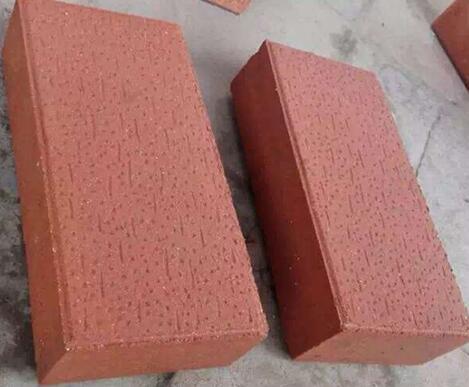Hot Product
Refractory Knowledge
The mystery of magnesia brick
Date:2019-07-22 17:22 From:Zhengzhou Sunrise Refractory Author:admin
The main crystalline phase of magnesia brick is periclase, which has the typical characteristics of general alkaline refractory products, but has poor thermal shock resistance.
Magnesia bricks are divided into burnt magnesia bricks and non-burn magnesia bricks. The burnt magnesia bricks are divided into silicate-bound magnesia bricks, direct-bonded magnesia bricks, and re-combined magnesia bricks Non-burned magnesia bricks are further divided into chemically bonded magnesia bricks and asphalt-bonded magnesia bricks.
Magnesia brick is an alkaline refractory material. It has strong resistance to alkaline slag, but it can not resist the erosion of acid slag. It can react with silica brick, clay brick and even high alumina brick at 1600 °C. The refractoriness of magnesia bricks is above 2000 °C, but its load softening point is only 1500~1550 °C. Moreover, the temperature interval from the beginning of softening to 40% deformation is very small, and the thermal stability of only 30~50 °C magnesia bricks is also poor, which is an important reason for the damage of magnesia bricks.
 The refractoriness of magnesia bricks can reach above 2000 °C, and the load softening temperature varies greatly depending on the melting point of the cement phase and the amount of liquid phase produced at high temperatures. Generally, the load-softening start temperature of magnesia bricks is between 1520 and 1600 °C, while that of high-purity magnesia bricks is up to 1800 °C. The loading softening start temperature of the magnesia brick is not much different from the collapse temperature. The linear expansion rate of magnesia bricks at 20~1000 °C is generally 1.2%~1.4%, and is approximately linear.
The refractoriness of magnesia bricks can reach above 2000 °C, and the load softening temperature varies greatly depending on the melting point of the cement phase and the amount of liquid phase produced at high temperatures. Generally, the load-softening start temperature of magnesia bricks is between 1520 and 1600 °C, while that of high-purity magnesia bricks is up to 1800 °C. The loading softening start temperature of the magnesia brick is not much different from the collapse temperature. The linear expansion rate of magnesia bricks at 20~1000 °C is generally 1.2%~1.4%, and is approximately linear.
When a liquid phase appears in a brick at a high temperature, shrinkage suddenly occurs. Magnesia bricks have a higher thermal conductivity, which is second only to carbon bricks and silicon carbide bricks in refractory products, which decreases with increasing temperature. The thermal shock resistance of the magnesia brick is poor, and the purity of the magnesia brick can be improved to improve the thermal shock resistance. Magnesia bricks have poor resistance to acid slag and cannot be directly contacted with silica bricks when used. Generally, they are separated by neutral bricks. The electrical conductivity of magnesia bricks at room temperature is very low, but it cannot be ignored at high temperatures (such as 1500 ° C). If used in electric furnace bottoms, attention should be paid.
Magnesia bricks are divided into burnt magnesia bricks and non-burn magnesia bricks. The burnt magnesia bricks are divided into silicate-bound magnesia bricks, direct-bonded magnesia bricks, and re-combined magnesia bricks Non-burned magnesia bricks are further divided into chemically bonded magnesia bricks and asphalt-bonded magnesia bricks.
Magnesia brick is an alkaline refractory material. It has strong resistance to alkaline slag, but it can not resist the erosion of acid slag. It can react with silica brick, clay brick and even high alumina brick at 1600 °C. The refractoriness of magnesia bricks is above 2000 °C, but its load softening point is only 1500~1550 °C. Moreover, the temperature interval from the beginning of softening to 40% deformation is very small, and the thermal stability of only 30~50 °C magnesia bricks is also poor, which is an important reason for the damage of magnesia bricks.

When a liquid phase appears in a brick at a high temperature, shrinkage suddenly occurs. Magnesia bricks have a higher thermal conductivity, which is second only to carbon bricks and silicon carbide bricks in refractory products, which decreases with increasing temperature. The thermal shock resistance of the magnesia brick is poor, and the purity of the magnesia brick can be improved to improve the thermal shock resistance. Magnesia bricks have poor resistance to acid slag and cannot be directly contacted with silica bricks when used. Generally, they are separated by neutral bricks. The electrical conductivity of magnesia bricks at room temperature is very low, but it cannot be ignored at high temperatures (such as 1500 ° C). If used in electric furnace bottoms, attention should be paid.
Inquiry:
If you have any questions or good suggestions on our products and site, or if you want to know more information about our products, please write them and send to us, a representative will contact you within one business day. We guarantee that your information will not be divulged to the third party.

